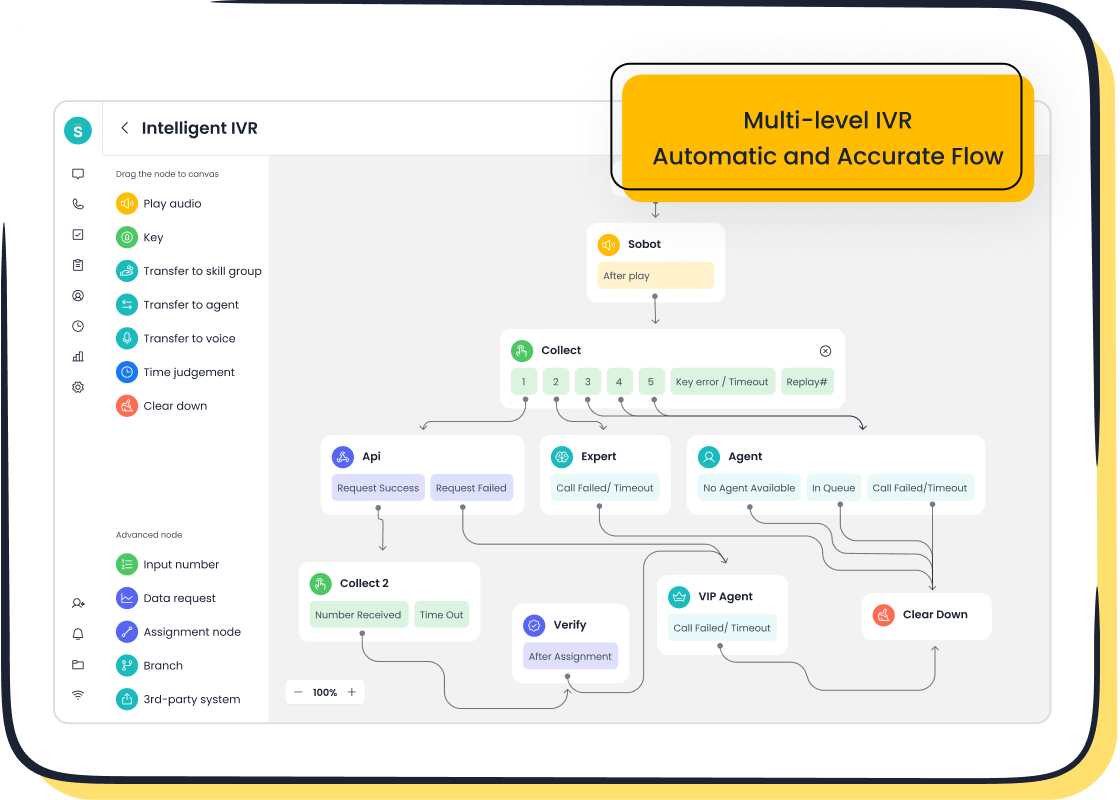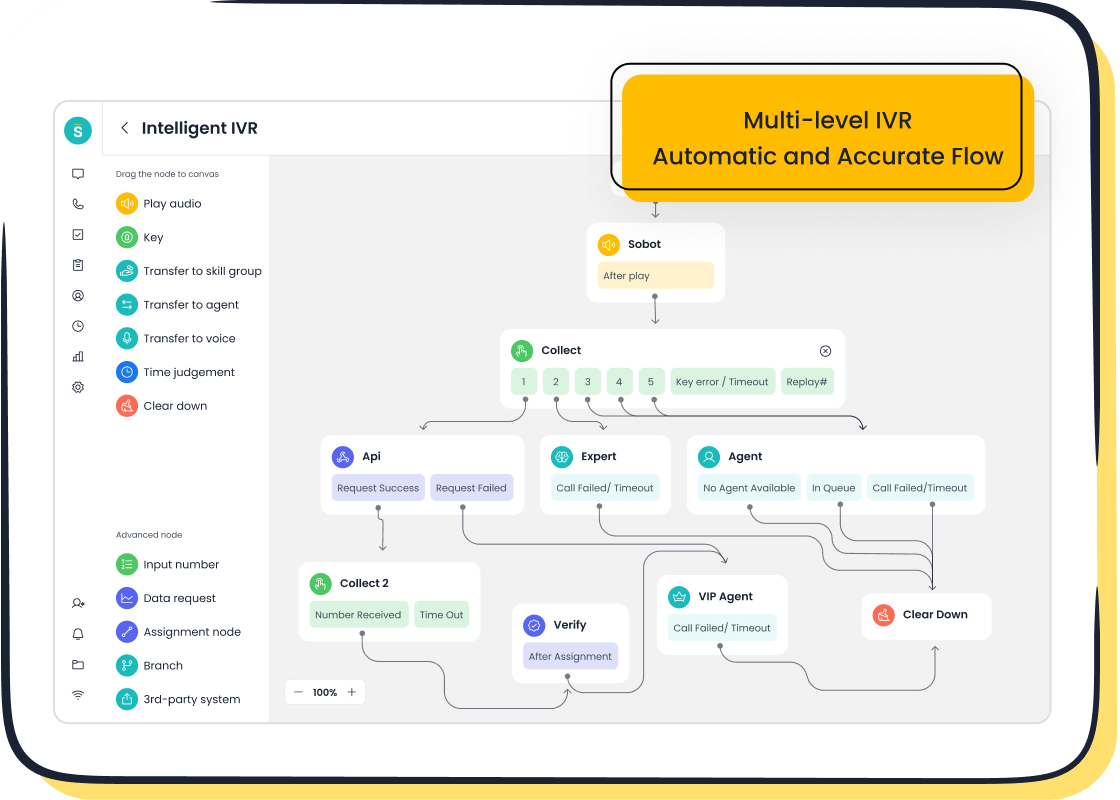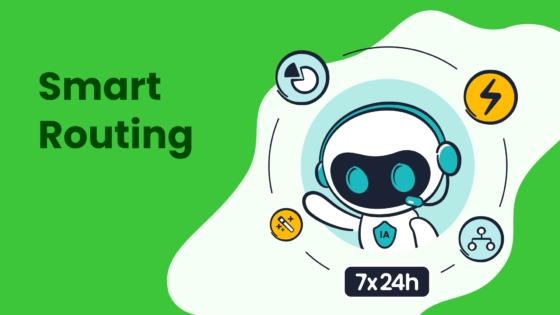What is ACD in Call Center and Its Role in Omnichannel Support

Automatic Call Distribution, or what is acd in call center terms, directs incoming calls to the right agents using intelligence and automation. Over 93% of call centers worldwide use this technology, showing its vital role in customer service management (source). What is acd in call center systems improves efficiency by reducing average call handling time and connecting customers with skilled agents. AI and automation now power modern solutions, like Sobot AI, to deliver faster, smarter customer service. Sobot call center solutions use intelligence and automation to unify customer contact, making every interaction seamless.
What is ACD in Call Center

Definition and Purpose
Automatic Call Distributor (ACD) systems form the backbone of modern call centers. These specialized telephony solutions automatically route, manage, and report on customer contacts. The core function of an ACD is to direct inbound calls to the most suitable agent or department based on predefined rules. These rules may include factors such as department, agent skill set, language proficiency, or current workload. Unlike Interactive Voice Response (IVR) systems, which interact with callers to gather information, or Computer Telephony Integration (CTI), which connects phones and computers, ACD focuses on distributing calls efficiently.
The formal definition of an ACD in the context of call centers describes it as a system that routes, sequences, and manages customer contacts. It encourages callers to wait through announcements, distributes contacts among available agents, and captures both real-time and historical performance data. This technology integrates seamlessly with other systems, such as CRM platforms, to provide a unified view of customer interactions.
The main purpose of deploying ACD technology in call centers is to enhance productivity, improve customer satisfaction, and ensure business accountability. By connecting customers to the best-qualified agents quickly, ACD systems help organizations achieve higher first-contact resolution rates and reduce call abandonment. These systems also support omnichannel interaction management, allowing businesses to deliver consistent experiences across voice, chat, email, social media, and video channels. Sobot, for example, leverages ACD technology within its cloud call center platform to unify customer contact and streamline operations for businesses worldwide.
Note: According to industry research, over 93% of call centers use ACD systems to manage customer interactions efficiently (source).
Core Functions
ACD systems perform several essential functions that drive the success of call centers. These functions include:
- Intelligent Call Routing: ACD uses algorithms to analyze caller data, agent skills, and availability. It routes calls to the most appropriate agent or department, ensuring that customers receive prompt and accurate assistance.
- Call Queue Management: The system prioritizes calls based on urgency, VIP status, or other criteria. This reduces wait times and minimizes the risk of abandoned calls.
- Integration with IVR: ACD works closely with IVR systems to collect caller information and guide call routing. This integration streamlines the customer journey and improves efficiency.
- Real-Time Monitoring and Analytics: Supervisors can track call volumes, agent performance, and wait times in real time. This data enables operational optimization and supports informed decision-making.
- Workforce Optimization: By integrating with scheduling and resource management tools, ACD balances workloads and improves agent productivity.
- Scalability: ACD systems handle high call volumes efficiently, supporting business growth and fluctuating demand.
- Automated Callback: Some ACD solutions offer automatic callback features, reducing customer wait times and enhancing service quality.
These core functions help call centers manage large volumes of inbound calls, prevent agent overload, and improve customer satisfaction. For example, Sobot’s cloud call center platform incorporates intelligent IVR, smart call routing, and real-time analytics to optimize every customer interaction. The platform’s AI-powered voicebot further enhances routing accuracy by recognizing caller intent and language preferences.
Tip: AI and machine learning play a significant role in modern ACD systems. They enable predictive routing, sentiment analysis, and continuous optimization of customer-agent matching.
Applications in Call Centers
ACD systems find application in a wide range of call center environments. They are especially critical in inbound call centers, where large volumes of incoming calls require efficient handling. In these settings, ACD routes calls to agents based on skills, availability, and other factors, ensuring that customers connect with the right person on the first attempt.
The primary objectives of using ACD in call centers include:
- Enhancing productivity by connecting customers to qualified agents quickly.
- Managing call volumes effectively, including during peak and overflow scenarios.
- Providing real-time monitoring and analytics for operational optimization.
- Supporting compliance and security requirements in regulated industries.
- Enabling omnichannel interaction management for consistent customer experiences.
Real-world examples highlight the impact of ACD technology. In customer service and support, ACD routes customers to the right agents, improving satisfaction and reducing frustration. In sales and lead management, it directs calls based on geography or previous interactions, increasing the chances of closing deals. Healthcare and emergency services use ACD to prioritize urgent cases, ensuring critical calls receive immediate attention. Financial services and banking rely on ACD to route calls to specialized departments, such as loan processing or fraud detection, streamlining support.
| Industry Sector | ACD Application Description | Key Benefits |
|---|---|---|
| Customer Service & Support | Routes customers to the right agents quickly | Improves satisfaction, reduces frustration |
| Sales & Lead Management | Routes calls based on geography or previous interactions | Increases chances of closing deals |
| Healthcare & Emergency Services | Prioritizes urgent cases in medical call centers and emergency response teams | Ensures critical calls are answered immediately |
| Financial Services & Banking | Routes calls to specific departments like loan processing, fraud detection, or account management | Streamlines specialized support |

Sobot’s cloud call center solution demonstrates the power of ACD in action. For instance, Weee!, America’s largest online Asian supermarket, implemented Sobot’s voice product to overcome challenges such as inflexible IVR systems and language barriers. By leveraging Sobot’s intelligent IVR and smart call routing, Weee! increased agent efficiency by 20% and reduced resolution time by 50%. The customer satisfaction score reached 96%, showcasing the effectiveness of automated call distribution in large-scale customer support operations (Weee! Customer Story).
AI-driven ACD systems also contribute to improved first-call resolution rates. They intelligently route calls to agents with the most relevant skills and expertise, reducing call transfers and escalations. Skill-based routing matches callers with agents who have the necessary knowledge to handle specific inquiries, leading to faster and more accurate resolutions. Integration with CRM systems provides agents with comprehensive customer history, enabling personalized and efficient service.
How ACD Works
Call Routing Process
Automatic Call Distributor systems use automation and ai to transform how call centers handle incoming contacts. The call routing process relies on rules such as agent skills, availability, caller input, and business hours. This automation ensures that customers reach the right agent quickly, reducing wait times and improving satisfaction. Unlike manual routing, which depends on a receptionist or agent to forward calls, automation in a call center eliminates inefficiency and long queues.
- ACD uses ai to analyze caller data and match them with the best agent.
- Call queues, IVR menus, and caller identification help direct calls correctly on the first attempt.
- Automation distributes calls based on agent availability and skill set, reducing idle time.
- Real-time monitoring and analytics optimize routing and prevent bottlenecks.
Customers benefit from faster service and fewer repeated explanations. Sobot’s cloud call center platform leverages smart call routing and ai-driven automation to deliver seamless customer experiences across global call centers.
Integration with CRM and Tools
Integration between ACD systems and CRM platforms is essential for modern call centers. When a call arrives, automation retrieves customer data and case history in real time. Agents see all relevant information on their screens, which enables personalized service and faster resolution. This integration eliminates manual data entry and reduces the need for customers to repeat information.
| Benefit | Description |
|---|---|
| Better Customer Experience | Agents have a complete view of customer interactions enabling personalized service. |
| Higher Agent Productivity | Access to customer information and history allows agents to resolve issues faster. |
| Improved Data Analysis | Unified customer interaction data supports informed, data-driven decisions. |
Sobot’s call center solution integrates with leading CRM systems, streamlining workflows and supporting adaptive real-time routing. This approach builds trust, strengthens relationships, and increases loyalty in call centers.
Real-Time Monitoring
Real-time monitoring is a core feature of ACD systems in call centers. Supervisors track incoming calls, agent availability, queue lengths, and hold times as they happen. This immediate visibility allows managers to adjust resources, address issues, and maintain high service levels.
- Live dashboards display metrics such as call volume, talk time, hold counts, callbacks, and abandonment rates.
- Monitoring tools help identify gaps, optimize resources, and improve agent performance.
- Automation and ai-driven analytics support continuous improvement and data-driven decisions.
Sobot’s call center platform provides real-time dashboards and analytics, empowering call centers to deliver efficient, high-quality service. This level of automation ensures that every customer interaction is tracked and optimized for the best outcome.
Omnichannel Support

Unified Customer Experience
Omnichannel communication creates a unified customer experience by connecting every touchpoint. Customers can switch between channels—such as phone, chat, or email—without repeating information. This seamless journey eliminates frustration and speeds up problem resolution. Research shows that 89% of customers are more likely to repurchase after a positive omnichannel service experience. Consistency across all channels builds trust and loyalty. Customers value knowing what to expect every time they interact with a brand. A unified approach ensures that each interaction feels familiar, reliable, and personal. Academic studies confirm that a strong, unified customer experience increases loyalty and strengthens brand reputation.
Customers interacting across multiple channels with seamless integration show up to 89% retention, compared to only 33% for weak omnichannel engagement.
Sobot Omnichannel Solution
Sobot delivers advanced customer-related solutions by integrating all communication channels into one intelligent platform. The Sobot omnichannel solution supports e-commerce, social media, websites, apps, email, and SMS. Its Five-AI system powers automation, scenario-based responses, and secure data management. Agents access a unified workspace, allowing them to provide proactive customer service and exceptional customer experience. Sobot’s platform offers over 300 statistical reports and thousands of indicators, supporting the full customer engagement lifecycle.
A real-world example is Weee!, America’s largest online Asian supermarket. After implementing Sobot’s omnichannel solution, Weee! saw customer satisfaction scores improve by over 30%. Net Promoter Score increased by 35%, and conversion rates rose by 15%. These results highlight how Sobot’s automation and proactive customer service drive efficiency and satisfaction.
Multichannel Integration
Multichannel integration allows agents to manage voice, email, SMS, chat, and social media from a single dashboard. Automation routes each inquiry to the most suitable agent, reducing wait times and improving first-contact resolution. Self-service options, such as AI-powered chatbots and IVR, handle routine questions, freeing agents to focus on complex issues. Integration with CRM systems gives agents instant access to customer data, enabling personalized support and proactive customer service.
This approach reduces tool-switching and streamlines workflows. Agents become more productive, and customers receive faster, more accurate service. Sobot’s omnichannel communication platform ensures that every interaction—no matter the channel—contributes to a consistent and exceptional customer experience.
AI Call Center Automation
AI-Powered Routing
AI call center automation transforms how organizations manage customer service. AI technologies process data instantly, making real-time decisions to route calls to the best agents. This intelligence ensures that customers connect with agents who have the right skills and experience. Artificial intelligence enables sophisticated call distribution, matching calls to agents based on expertise and availability. AI-driven acd systems also use sentiment analysis to detect customer emotions, prioritizing calls that need special attention. Voice recognition and speech analytics extract insights from conversations, improving training and service quality.
Key benefits of AI-powered routing include:
- Real-time decision making that reduces wait times.
- Smart call routing for quicker resolutions and personalized experiences.
- Automated call routing that scales with business needs.
- Improved first-call resolution and reduced transfer rates.
- Enhanced customer satisfaction through knowledgeable agents and shorter handle times.
Automation in Sobot Voice/Call Center
Sobot leverages AI call center automation to optimize every stage of the customer journey. The platform employs a multi-faceted AI approach, supporting customers, agents, and administrators. For customers, the Sobot AI Agent learns from a knowledge base, delivering accurate and humanized self-service. For agents, the AI Copilot suggests replies and drafts summaries, boosting efficiency. Administrators benefit from AI Insight dashboards, which help optimize operational decisions. Sobot integrates generative AI powered by advanced language models, ensuring industry-specific responses. The AI-first strategy unifies communication channels, including websites, apps, social media, email, SMS, and AI voicebots. These voicebots handle both inbound and outbound calls, enabling intelligent call distribution and efficient automation. Sobot’s secure AI maintains global data privacy and compliance, supporting reliable customer service.
Agent Productivity
AI call center automation drives measurable improvements in agent productivity. Intelligent routing connects callers to the right agent immediately, reducing wait times and eliminating repeated explanations. Automation matches calls to agents’ expertise, preventing overload and allowing agents to focus on their strengths. Organizations observe a 20% reduction in average handle time, leading to significant efficiency gains. First-call resolution rates improve, increasing the percentage of issues resolved in the first interaction. Balanced workloads enhance agent morale and utilization. Real-time analytics and reporting identify bottlenecks and optimize staffing.
Common productivity metrics include:
| Metric | Impact of AI Call Center Automation |
|---|---|
| Average Handle Time | Reduced by up to 20% |
| First-Call Resolution | Increased rates, fewer repeat contacts |
| Agent Utilization Rate | Improved through skill-based routing |
| Schedule Adherence | Maintained with real-time monitoring |
| Customer Satisfaction | Enhanced by smoother, faster service |
AI call center automation also supports self-service, freeing agents to handle complex issues. Quality management improves through automated call scoring and conversation insights. These advances in artificial intelligence and automation help organizations deliver exceptional customer service while maximizing operational efficiency.
Trends in ACD for 2025
AI and Machine Learning
Key trends in ai and automation are shaping the future of ACD systems. By 2025, artificial intelligence will power up to 95% of customer interactions, transforming how call centers operate. AI-powered chatbots now handle initial customer contacts, solve routine problems, and process natural language to understand intent. Most customers—74%—prefer interacting with ai for simple queries. Organizations use ai call center automation to reduce agent workload, automate tasks, and improve productivity. Machine learning and natural language processing allow systems to analyze real-time data, predict customer needs, and route calls to the best agents. Sobot leads this shift with its AI-first strategy, offering ai solutions that include AI Agent, AI Copilot, and AI Insight. These tools support omnichannel engagement, scenario-based automation, and industry-specific accuracy.
Cloud-Based Solutions
Cloud-based technology is another major trend in acd for 2025. Contact centers now use cloud-based ACD platforms for flexibility, scalability, and cost-effectiveness. These solutions enable agents to work remotely, support omnichannel communication, and provide features like automatic call distribution, IVR, and analytics dashboards. Businesses benefit from lower upfront investment, rapid deployment, and continuous updates. Sobot’s cloud call center platform delivers 99.99% uptime, global reach, and secure data management. The platform’s automation and ai capabilities ensure reliable service, even as call volumes change. Cloud-based ACD also supports remote work, aligning with the rise of hybrid teams.
Personalization and Analytics
Hyper-personalization stands out as a defining trend in ai call center automation. AI-driven personalization uses machine learning and predictive analytics to anticipate customer needs and deliver context-aware experiences. Real-time speech transcription and ai-powered hyper-personalization help agents provide tailored suggestions, improving engagement and satisfaction. Sobot’s platform leverages artificial intelligence and advanced analytics to create dynamic customer profiles and optimize every interaction. Companies using ai-powered hyper-personalization see up to a 30% increase in customer satisfaction and a 25% boost in sales. Hyper-personalization extends across all channels, ensuring consistent, relevant experiences. As customer expectations evolve, continuous optimization and data-driven insights will remain essential for success.
Sobot’s leadership in adopting ai, automation, and cloud-based technology positions it at the forefront of these 2025 trends. Its comprehensive ai solutions and commitment to hyper-personalization help businesses achieve higher efficiency, stronger customer relationships, and measurable growth.
The evolution of ACD has transformed call centers by integrating ai and automation into every aspect of customer service. Modern systems use ai for skill-based routing, automation for real-time monitoring, and ai-driven analytics to improve customer experience. Companies like Sobot lead with cloud-based platforms that combine ai, automation, and unified workspaces. Businesses adopting ai-powered automation in customer service see measurable gains:
- ai and automation streamline customer service, saving up to 2.5 billion hours annually.
- ai enables automation of repetitive tasks, boosting productivity by up to 400%.
- ai-driven automation improves first-contact resolution and reduces operational costs.
- ai and automation personalize customer service, with 62% of companies reporting better results.
- ai-powered automation supports proactive customer service and trend forecasting.
- ai and automation ensure 99.99% uptime and global reach for customer service teams.
- ai-based automation integrates with CRM, making customer service seamless.
- ai and automation reduce average handle time by 41% and improve customer satisfaction.
- ai voicebots and automation enhance agent assistance and reporting.
- ai and automation drive business outcomes, increasing engagement and lowering costs.
| Benefit | Impact |
|---|---|
| ai & automation | Higher productivity, better customer service, improved customer experience |
| Sobot’s platform | Unified workspace, real-time ai analytics, global automation support |
Sobot’s future-ready solutions help businesses deliver exceptional customer service through advanced ai and automation. Explore Sobot to elevate your customer experience and operational efficiency.
FAQ
What is ACD in call center technology?
Automatic Call Distribution (ACD) in call center technology routes incoming calls to the best available agent. This system uses rules like agent skills, language, and workload. Over 93% of call centers use ACD for efficient customer service (source).
How does ACD improve customer satisfaction?
ACD connects customers with the right agent quickly. This reduces wait times and increases first-contact resolution rates. For example, Sobot’s ACD system helped Weee! achieve a 96% customer satisfaction score by streamlining call routing and reducing resolution time.
Can ACD handle multiple communication channels?
Yes. Modern ACD systems, like those from Sobot, support omnichannel integration. They route voice, chat, email, and social media inquiries from one platform. This unified approach ensures customers receive consistent service across all channels.
What is the difference between IVR and ACD in call center operations?
IVR collects caller information using automated menus. ACD uses this information to route calls to the right agent. Together, they create a seamless customer journey. Sobot’s platform combines both for efficient call center automation.
Why should businesses choose Sobot for ACD and omnichannel support?
Sobot offers a stable, AI-powered ACD system with 99.99% uptime. Its omnichannel solution integrates voice, chat, and social media. Businesses using Sobot see improved agent productivity, faster response times, and higher customer satisfaction. Learn more at Sobot’s official website.
Tip: Using what is acd in call center solutions like Sobot’s can boost efficiency and customer loyalty.
See Also
Comprehensive Overview Of Omnichannel Software For Call Centers
Step-By-Step Approach To Deploy Omnichannel Contact Centers
How AI-Powered Agents Are Transforming Customer Support